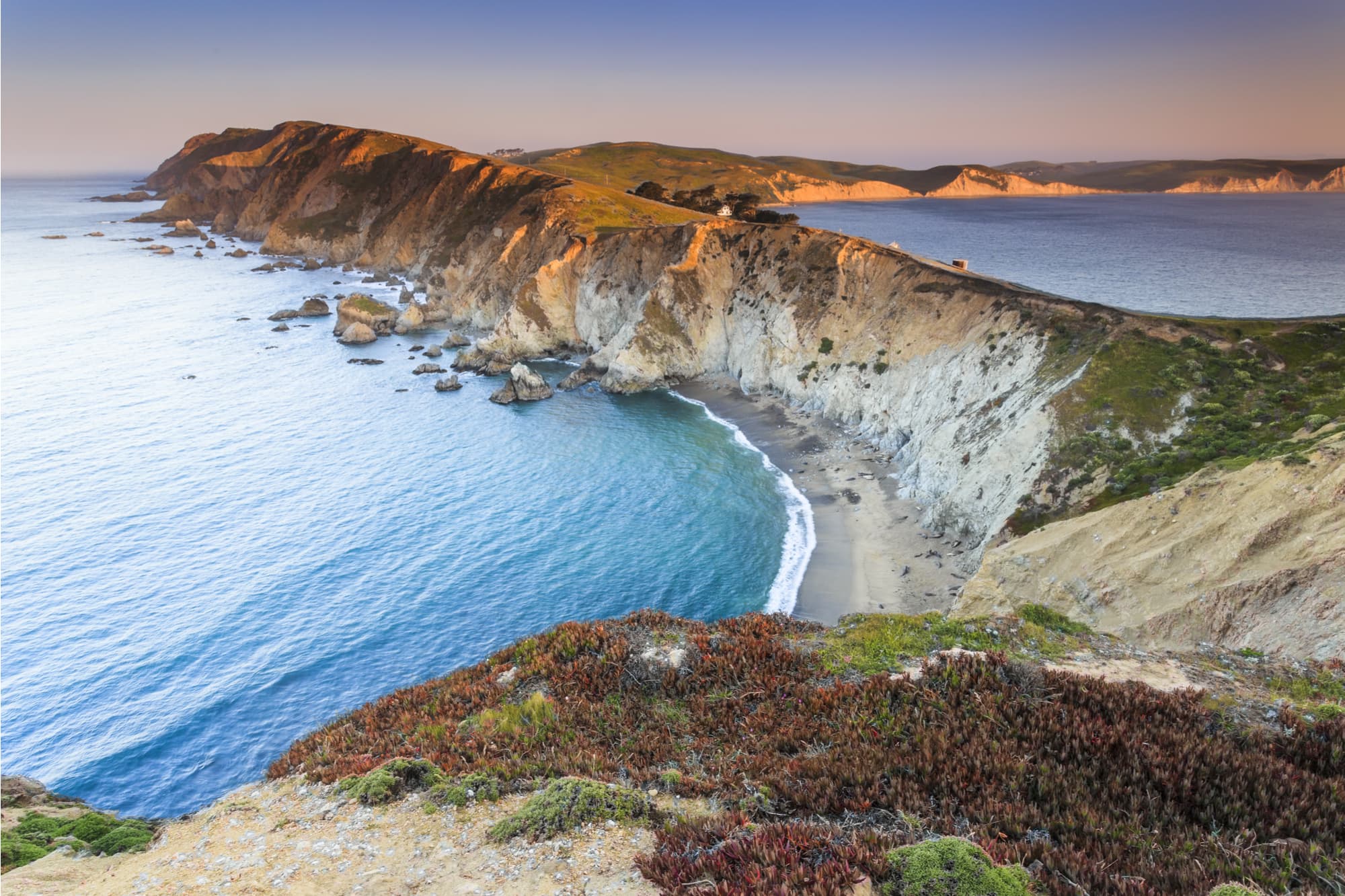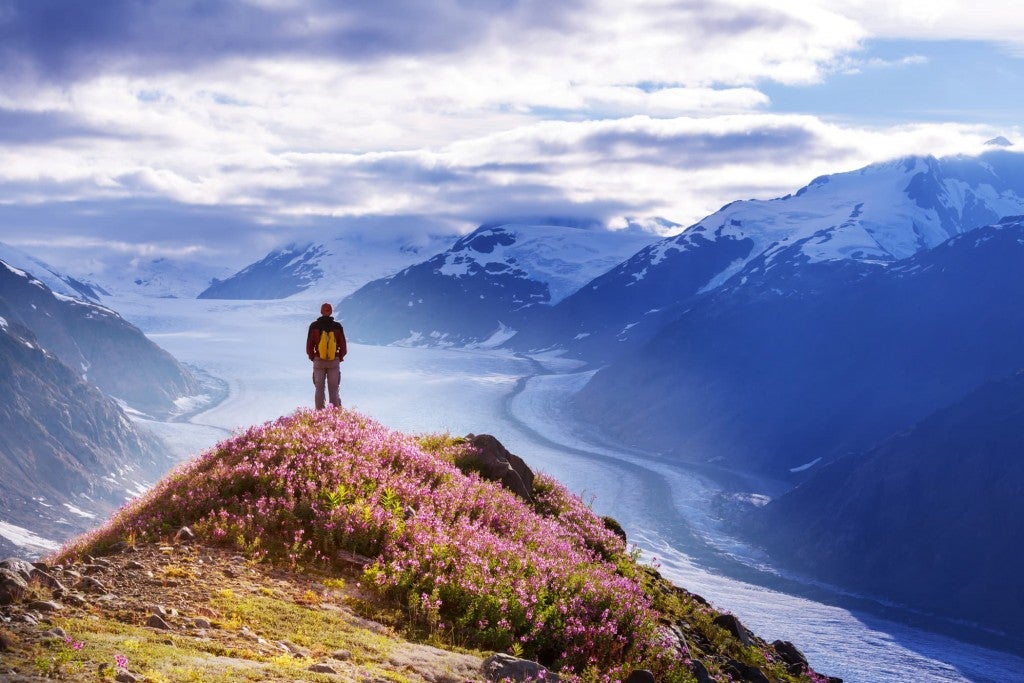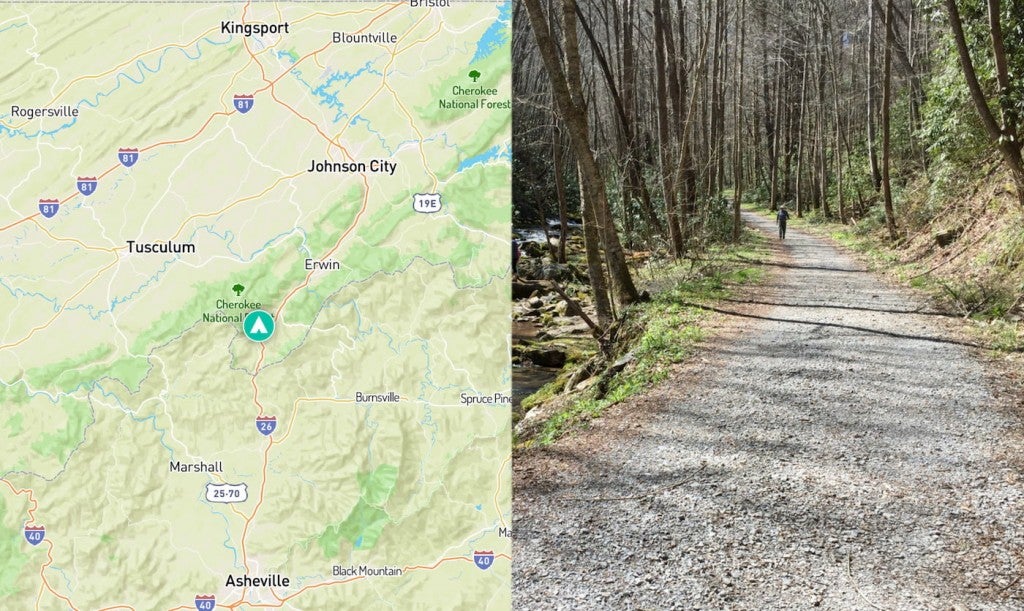Outdoor lovers in California’s Bay Area have innumerable public recreation options in close proximity—just part of what makes San Francisco one of the most active cities in the U.S., year after year. But while some cities have attractive recreation parks on their shores, none match up to the classic California coastline at Point Reyes National Seashore. Camping at Point Reyes is a great way to experience the backcountry of the Bay Area.
The area, managed by the National Park Service, is a prominent cape made up of rocky cliffs, sandy dunes and rolling grassy hills that juts into the Pacific Ocean just 30 miles northwest of San Francisco in Marin County. Tomales Bay, a narrow 15-mile long inlet, separates the cape from the rest of the Marin headlands on the east. The stunning views, lush vegetation, unique wildlife, and remoteness make Point Reyes camping truly feel like getting away (that’s more literal than you think; it is geologically split from the rest of the U.S. by a rift zone).
Now preserved as the Point Reyes National Seashore, the region has served its inhabitants for thousands of years. The abundance of wildlife in the region attracted the Native American Coast Miwok Tribe for thousands of years. After a period of ranching, 71,000 acres on the peninsula were protected by the National Park Service in the middle of the 20th century. Today, the National Seashore is a prime spot for species emblematic of northern California’s coasts, the northern elephant seals and the tule elk.
Head to the Backcountry in the Bay Area on a Point Reyes Camping Trip

Camping on Point Reyes doesn’t match other famous California camping options; there are no car camping or RV camping options, meaning you should prepare for your Point Reyes camping trip with essentials for a backpacking trip.
While the hike-in campgrounds involve more planning, camping at Point Reyes is worth the effort. The National Seashore offers five year-round backcountry campgrounds, each with more amenities and comfort than many backcountry camping options normally offer. New backpackers will find Point Reyes camping relatively easy, and a tantalizing introduction to backcountry camping. Experienced backpackers will enjoy the stunning coastal landscapes and can string together a few of the campgrounds for a multi-day adventure.
How to Camp at Point Reyes
Four of the campgrounds at Point Reyes National Seashore can be reached via a hike, a bike ride, or—for the adventurous among us—horseback. They are nestled along Drakes Bay and amongst the hills and valleys of the Phillip Burton Wilderness. If you’re looking to be even closer to the water, grab a kayak, canoe, or other small boat and paddle out to the area’s one remote campground from the water on the west shore of Tomales Bay. It is $20 a night for an “individual” campsite that fits up to six people
Because of its proximity to the Bay Area, campsites are in high demand. Visitors can make reservations ahead of time, or check for available same-day permits at the Bear Valley Visitor Center. In addition to a reservation, campers will need a backcountry permit. They must pick the permit up at the Bear Valley Visitor Center before starting their trip, and display it on a backpack or a tent. A parking pass must also be picked up at the visitor center.
Hike-in and Bike-in Point Reyes Camping Options
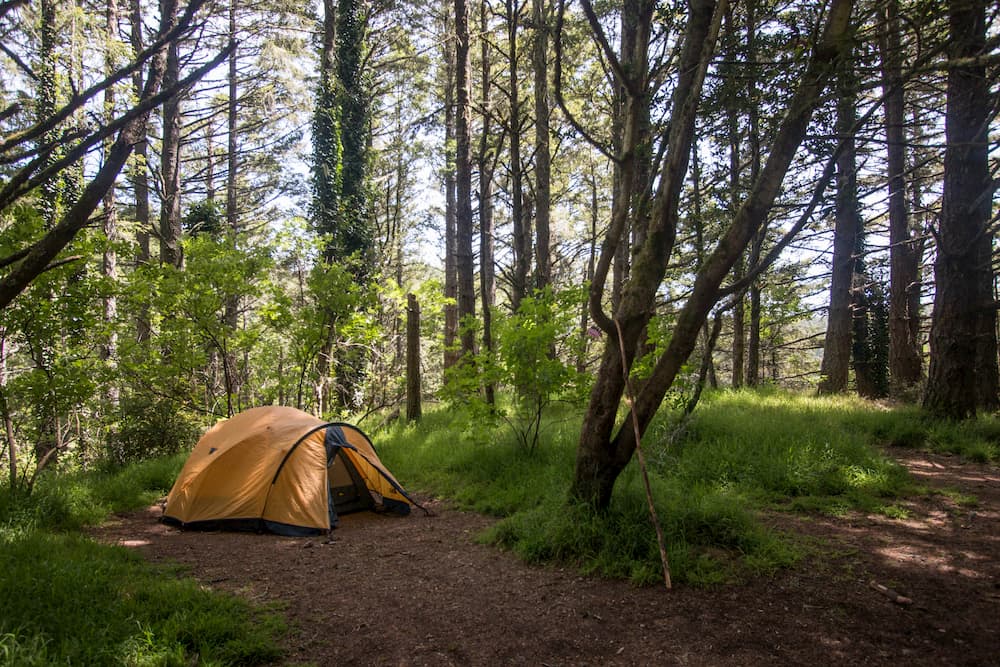
Image from The Dyrt camper Sasha N.
Each Point Reyes backcountry campground has a vault toilet and a water faucet. The water is usually potable, but the park officials recommend campers bring means to treat water just in case. Each campsite has a picnic table, a food storage locker and a charcoal grill.
Coast Camp
The Coast campground has 12 individual sites and two group sites in a coastal grassy valley just 650 feet from the beach. It is reached from the Laguna Trailhead just past the hostel. Follow the Laguna and Firelane trails for a 1.8-mile slightly uphill hike. Or follow the Coast Trail for an easy, flat 2.7-mile route, well-suited to bicycles.
“West Marin offers an incredibly picturesque location to explore, and Coast Camp is about as good as it gets. With a minutes hike to the beach, and all sorts of creeks, coast, forest and wildlife nearby it’s ideal for those that like to adventure away from the campsite and fire out to the world surrounding you,” —The Dyrt camper Patrick O.
Glen Camp
The Glen campground also has 12 sites, but they’re in a wooded valley protected from the ocean breezes and a strenuous 2.5 mile hike to the beach. The campground is a little more secluded and does not allow pack animals or groups. It can be reached via a moderate 4.6-mile hike along the Bear Valley Glen Trails, or a more strenuous 6.3-mile bike ride.
Sky Camp
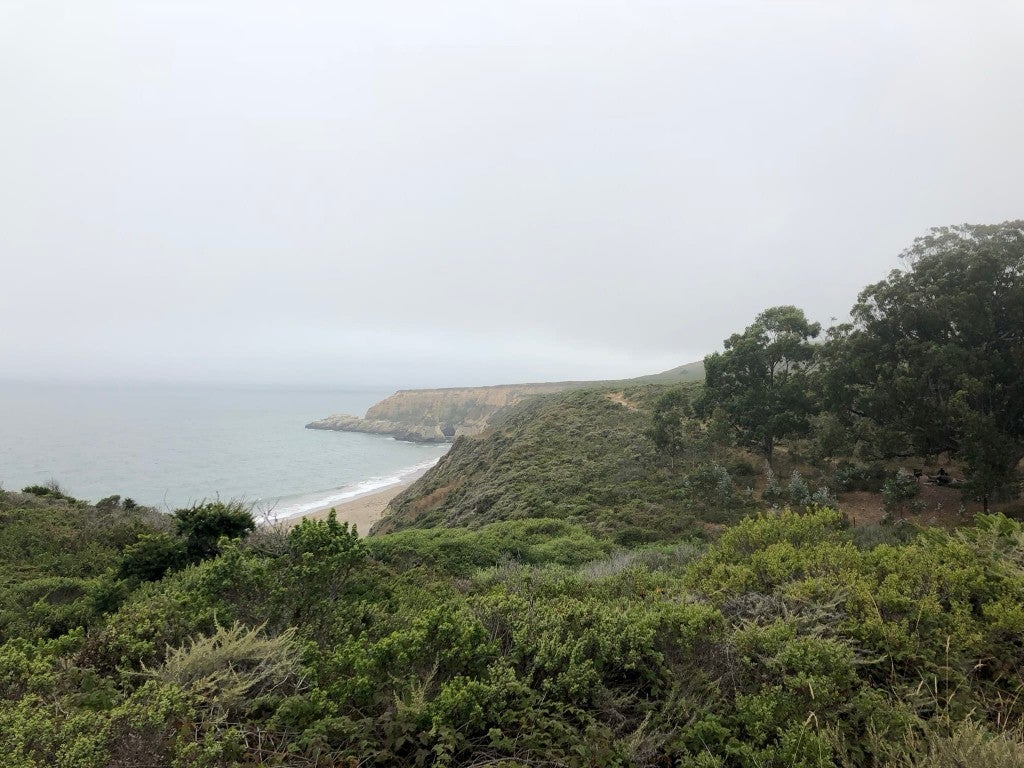
Image from The Dyrt camper Jeremy S.
The accurately-named Sky campground offers camping on Point Reyes with sweeping views of Drakes Bay and the Pacific ocean. It has 11 individual sites and one group site on the western side of Mount Wittenberg, at an elevation of 1,025 feet. It also has the shortest and easiest approach from the visitor center of all the campgrounds: a 1.5-mile moderate uphill hike or bicycle ride from the Sky Trailhead. The hike down to the beach is steep and long, though.
“Our campsite itself didn’t have a great view (I’ve heard #10 and #11 are the best views, can see the ocean), but from other parts of the campground we could still see the ocean… it’s only a 1.5 mile hike in from the parking lots so it’s great for beginners or kids,” —The Dyrt camper Kathleen L.
Wildcat Camp
The Wildcat campground is the closest hike-in campground to the beach. There are five individual campsites and three group campsites on an open meadow and bluff overlooking the ocean. Hikers can reach it from a 6.3-mile hike from Bear Valley or an 5.5-mile hike from Palorin on the Coast Trail. Bikers must ride a strenuous 6.7 miles along the Stewart Trail from the Five Brooks Trailhead.
“These are sites are in high demand, but totally worth the wait to experience. The hike in was somewhat lengthy but the views make it seem far less daunting. The sites are somewhat close together, but the whole vibe of the campground and other people there was so chill,” — The Dyrt camper Sara S.
Boat-in Point Reyes Camping Options
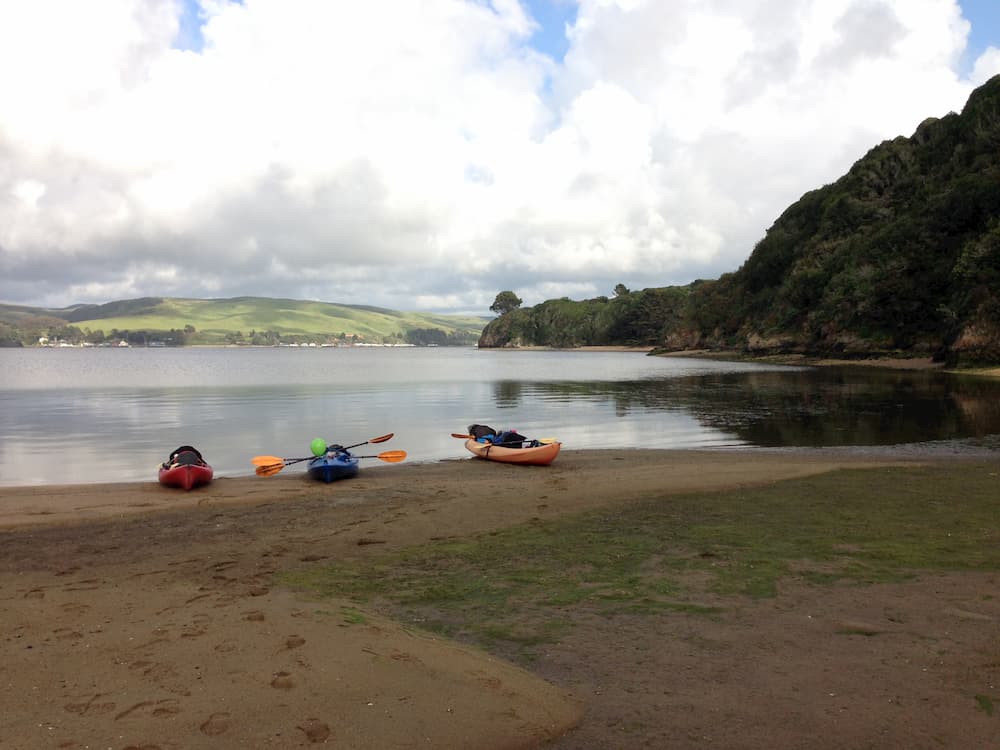
Image from The Dyrt camper Deanna K.
Finding a remote campground from the water at the Point Reyes National Seashore can be the adventure of a lifetime—what better way is there to experience California’s golden coast than gliding across the water?
Where to Launch
There are four places from which you can launch your boat. Chicken Ranch Beach is just north of Inverness along Sir Francis Drake Boulevard, and has a sandy beach popular for kayak launches. Tomales Bay Resort has a cement boat launch on the west side of the Bay, and campers can leave their car overnight for a fee. The Miller Boat Launch is on the east side of the Bay, along Highway 1, and it offers a public boat launch and facilities, including overnight parking. Lawson’s Landing is in Dillon Beach, and is best for campers eyeing spots on the north end of Tomales Bay.
“I recommend, launching your boat from the Miller Boat Launch in Marshall (eastern side of the bay). Overnight parking is $5. First campsites are a 30 minute paddle across the bay. The best (less crowded) can be reached by heading north 45- 75 minutes out,” —The Dyrt camper Tiffany F.
Tomales Bay Camping
There are no designated campgrounds with facilities on the beaches of Tomales Bay; instead, boaters will have to choose between 14 beaches open to campers with permits. The primitive sites on the shore are unmarked and first come, first served.
Be sure to plan ahead here in the same way you’d plan for a backcountry camping trip: you’ll have to haul in your own water, and bring an animal-resistant food storage system with you, due to the prevalence of raccoons, coyotes, otters and other animals. If you want to build a fire, you’ll have to pick up a fire permit at the visitor’s center. It’s recommended to bring an alternative method of cooking in case of high fire danger or a spare-the-air alert.
Point Reyes Camping Activities

Getting to your spot with all your gear was the hard part; now, enjoy the multitude of Point Reyes camping activities ahead of you.
Hike from the Beach to a Mountain
You can explore about 150 miles of hiking trails that stretch across the National Seashore. There are short hikes of less than an hour, like the Limantour Spit Trail near the beach. If you’re in for a slightly longer hike, consider summiting Mount Wittenberg, the tallest point in the park. The most spectacular hike, undoubtedly, is the trip to Alamere Falls. Water cascades over 30 feet off the cliff onto Wildcat beach. Deep in the Phillip Burton Wilderness, the hike is at least 20 km, or 13 miles. You can access the falls from Wildcat campground along the beach at low tide.
Spy Native Wildlife from Your Campsite
Bring your binoculars and cameras because you’re likely to see some of the most emblematic and charismatic animals of the California coast—elephant seals.
Elephant seals have been steadily growing in numbers since they returned to the Point Reyes headlands in the 1970s. In early 2019, they even took over Drakes Beach adjacent to the Kenneth C. Patrick Visitor Center while the park was closed during the government shutdown. You can see the giant, blubbery animals at all points of the year, but they are greatest in number December through March for the birthing and mating season, and in the spring when adult females and juveniles molt. Head to Elephant Seal Overlook near Chimney Rock, above beautiful Drakes Bay, to spot a colony.
Beyond the famous elephant seals, Point Reyes is home to tule elk, which can be spied in the Elk Preserve on Tomales Bay. Some grey whales are known to swim near campsites on Point Reyes, and are more prominent in mid-January and mid-March.
Explore Historical Landmarks

The historical Point Reyes Lighthouse first began warning mariners of navigational hazards in 1870. It was retired in 1975 after serving for 105 years. You can access it at the end of a long and slow drive along Sir Francis Drake Boulevard. Check out the historical clockwork and Fresnel lens, and visit the observation deck and ocean exploration center. Visitors should take note, however, of an ongoing restoration effort that will cause temporary closures in 2019.
Within the National Seashore, you can also visit the historic KPH maritime radio receiving station, built by Guglielmo Marconi (long considered the inventor of modern radio) in 1913. You may also want to check out the Cypress Tree Tunnel, a signature drive near the North District Operations Center.
Other Local Attractions
The nearby towns of Point Reyes Station, Olema and Inverness each offer charming activities, shops, restaurants and other attractions that offer campers a welcomed day trip. Stores offer everything from the best California wine and cheese, to more outdoor gear if you need to restock.
A rite of passage for your trip in the area is to enjoy the local delicacy, oysters. Find them at Hog Island Oyster Company in Marshall, right off Highway 1, or try the Tomales Bay Oyster Company.
Related Campgrounds:
- Bodega Dunes Campground, Bodega Bay, CA
- Brighton State Beach Campground, Capitola, CA
- Coast Camp Point Reyes, Point Reyes, CA
- Bodega Bay RV Camping, Bodega Bay, CA
- Lake Tulloch Camping, Jamestown, CA
- Camping Near Bodega Bay: Bodega Bay RV Park, CA
- China Camp campground, San Rafael, CA
- Lee Vining Camping near Bridgeport, CA

